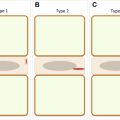
The purpose of this special issue is to approach the different fields of the spine pathology more frequently observed in the clinical practice, according to the last MR Imaging improvements explained by subject matter experts; all efforts have been provided to integrate the clinical aspects with the more updated imaging protocols in order to associate images to patient clinics. At the end of each article, take-home points are provided to summarize the main contents.
This issue starts with the neuroimaging of spinal instabilities, with Muto and colleagues reviewing the anatomical principles of stability and the basic concepts of spinal instability and describing the role of the different imaging techniques, both conventional and dynamic.
The second article by Clarençon and colleagues and the third article by Galbusera and colleagues approach extensively the wide theme of the degenerative spine disorders, reporting the MR Imaging patterns and the radiographic spinal and pelvic parameters that have relevance in the clinical management of adults with spinal disorders; in this section is analyzed also the crucial role of imaging when planning surgery on a degenerated spine.
The variety of forms of spinal stenosis is faced in the article by Cowley by reviewing the literature with particular emphasis on the clinic-radiological correlation in both neurogenic intermittent claudication and cervical spondylotic myelopathy.
The article by Wolf and Weber summarizes the current classification schemes of spinal trauma and rules to decide pon the proper imaging modality after a spinal trauma, while the article by Merhemic and colleagues discusses the role of MR Imaging to localize and characterize spine tumors before treatment as well as for follow-up after treatment.
The different anatomical compartments that can be involved by infections of the spine, including intervertebral discs, vertebral bone, paraspinal soft tissues, epidural space, meninges, and spinal cord, are analyzed together with the role of imaging in diagnosis and follow-up in the article by Prodi and colleagues.
Because the operative treatments of the spine are becoming increasingly more common for the availability of a wide range of surgical and minimally invasive procedures, a whole article , written by Bellini and colleagues, is dedicated to the role of MR Imaging for the evaluation of both normal and abnormal findings in the postoperative spine.
Finally, a basic primer on the embryologic and developmental anatomy features of the spine and spinal cord is provided in the article by Rossi and colleagues together with a few technical points and pitfalls, as well as a summary of the most common indications for pediatric spinal MR Imaging.
In conclusion, all the authors involved in this review have made efforts to produce articles that it is hoped offer a helpful overview of the main topics about spinal pathologies a radiologist may encounter during his professional career.
Stay updated, free articles. Join our Telegram channel

Full access? Get Clinical Tree




